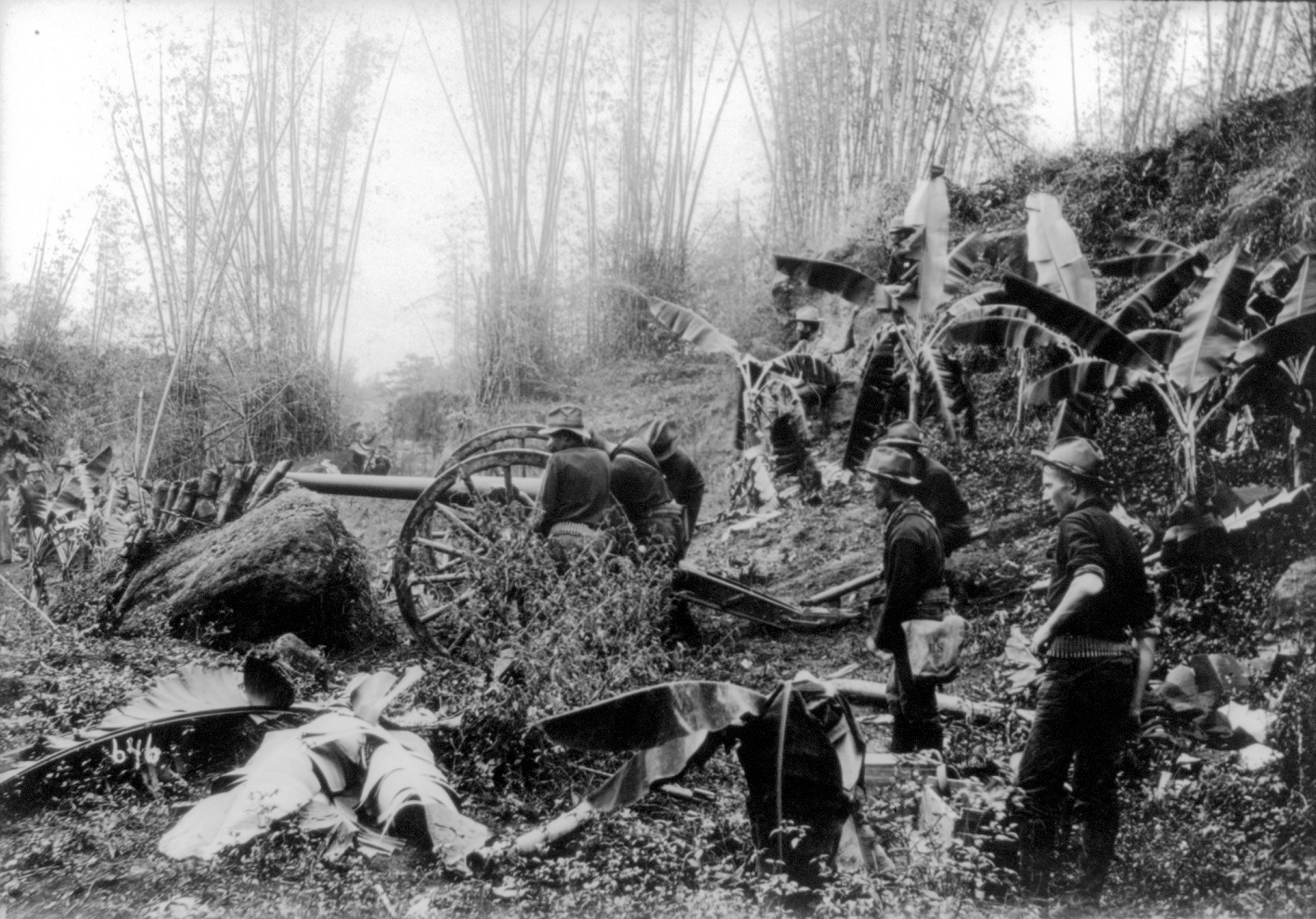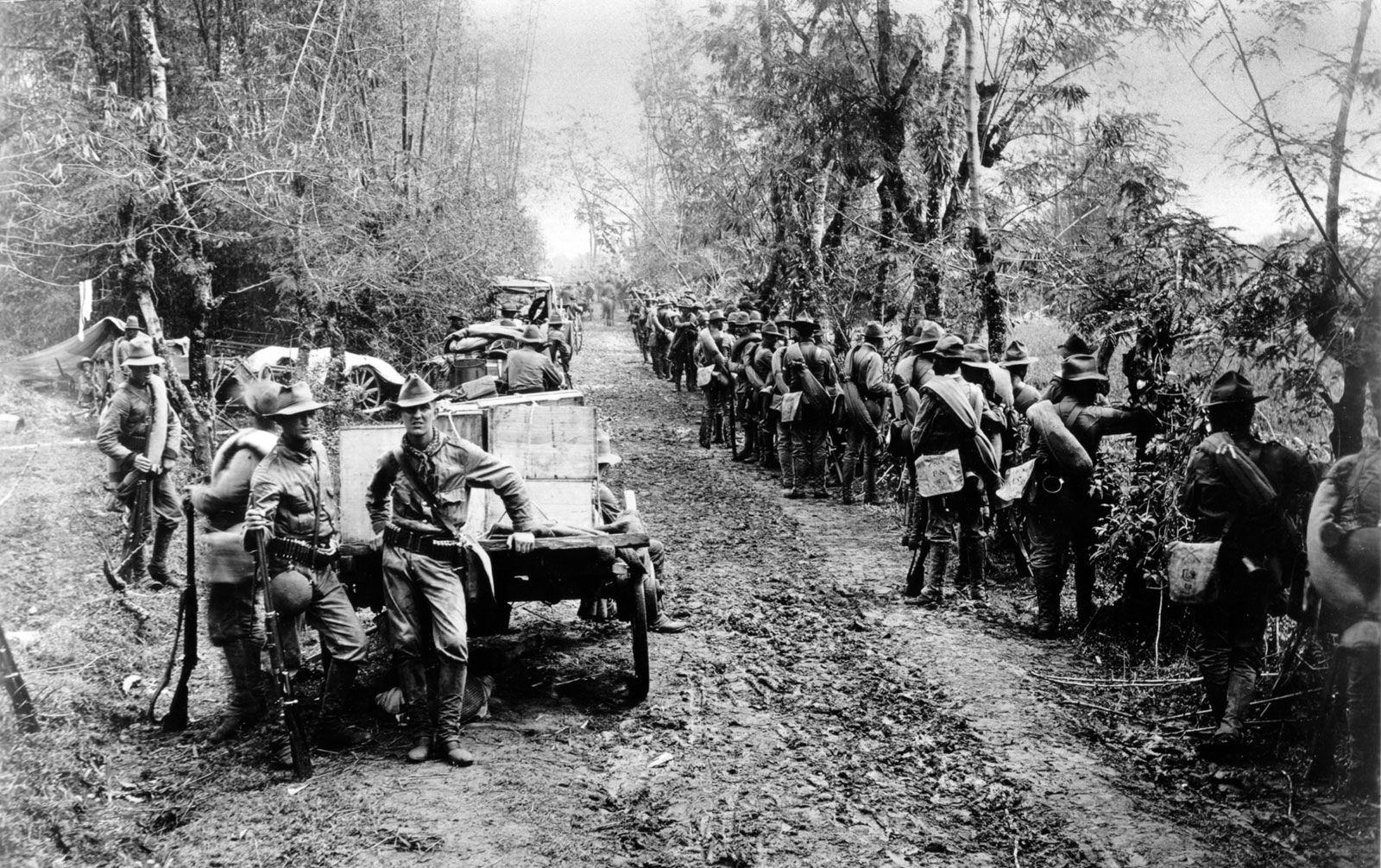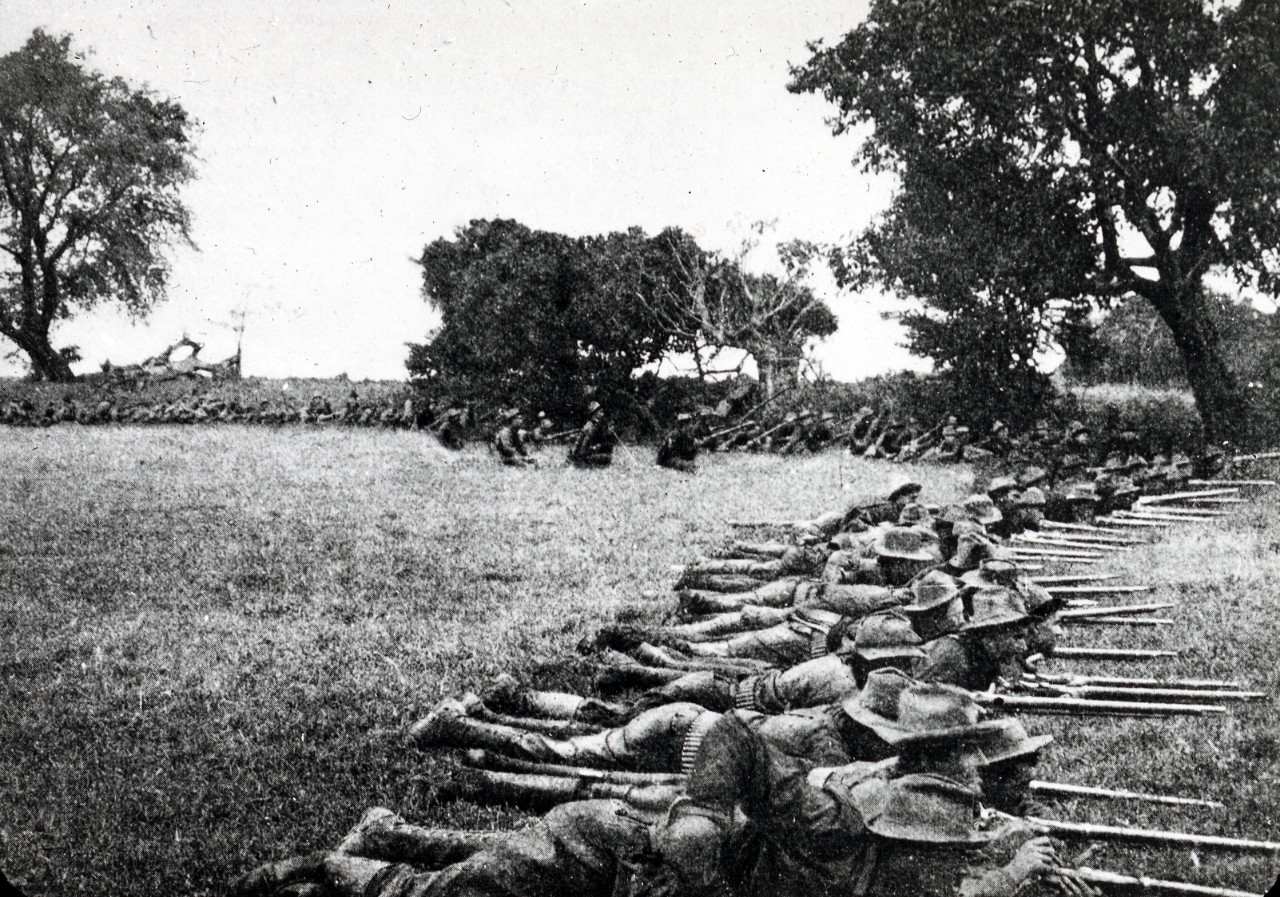The Philippine-American War (1899–1902) emerged from the complexities of the Spanish-American War, where the United States acquired the Philippines from Spain as part of the Treaty of Paris. Filipino revolutionaries, led by Emilio Aguinaldo, had declared independence from Spain and were seeking to establish their own sovereign government. The U.S., viewing the Philippines as a strategic asset in Asia, sought to colonize the islands instead of granting them independence. This ignited a conflict between Filipino forces and American troops.

Battle scenes from Manila, 1899. Source: Wikimedia Commons
The war was characterized by two distinct phases. Initially, Filipino forces attempted to engage U.S. troops in conventional warfare but soon transitioned to guerrilla tactics in response to American military superiority. Key battles included the Battle of Manila, where the U.S. easily defeated Spanish forces, and subsequently, the Battle of San Juan Hill. As the war progressed, engagements became more brutal and widespread, leading to significant casualties on both sides.

American troops during the Philippine campaign. Source: Britannica
The Philippine-American War saw numerous reports of human rights violations. American troops employed harsh tactics, including “water cure” torture methods and widespread destruction of Filipino villages. Estimates of civilian casualties during the conflict range from 200,000 to 1,000,000 due to disease, famine, and direct violence—a stark contrast to the relatively few U.S. military casualties of about 4,200.

Filipino casualties during the early stages of the conflict. Source: Wikimedia Commons
The conflict had profound implications for Filipino national identity. While it initially sparked a strong sense of nationalism, the brutal nature of the war and subsequent American control reshaped Filipino society. The memory of the war played a significant role in the development of Filipino cultural and national consciousness, highlighting themes of resistance and resilience against colonial rule.

Naval operations during the Philippine Insurrection. Source: U.S. Naval History and Heritage Command
The Philippine-American War is often referred to as “America’s first Vietnam” due to its complexities and the contentious nature of American colonialism. Today, it remains a crucial topic in discussions about U.S. imperialism and its long-lasting effects on the Philippines. Educational efforts to acknowledge this conflict are ongoing, as it is frequently overshadowed by later events in U.S. history, including World War I and World War II.
References:
Philippine-American War – Encyclopedia Britannica – link
U.S. Naval History and Heritage Command – link
Categories: American History, Asian History, Colonialism, Historical Wars, Military History, War History
Tags: American Imperialism, Asian History, colonial history, Human Rights, Military History, Philippine-American War
Religion: Multiple
Country of Origin: Philippines, United States
Topic: Historical Conflict
Ethnicity: Multiple


